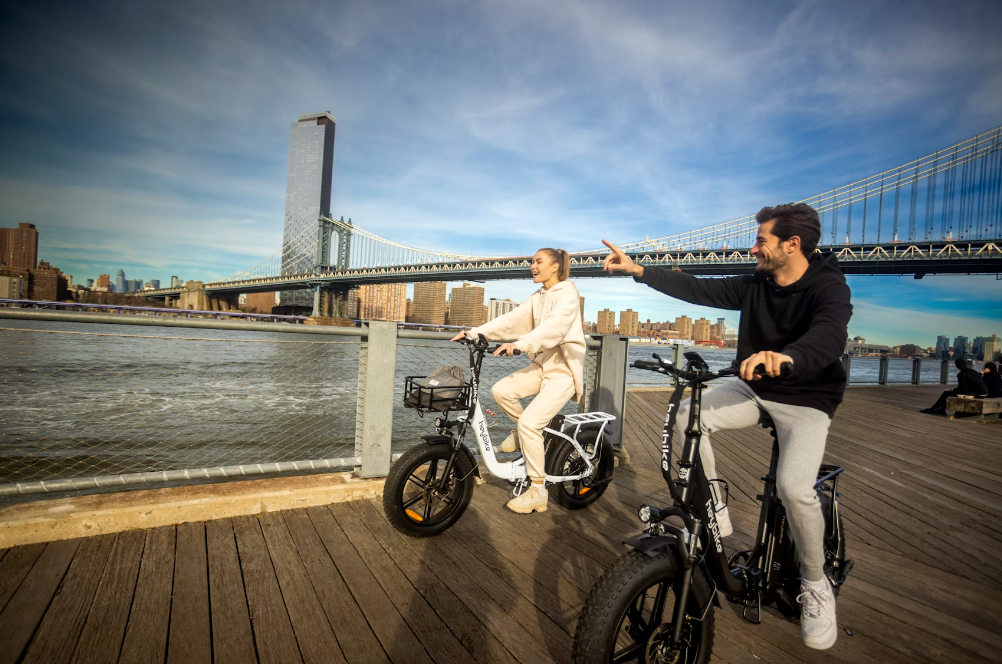E-Bike Myths Debunked: Separating Fact From Fiction

Table Of Contents
E-bikes, or electric bikes, continue to gain popularity as a convenient and environmentally sustainable mode of transportation. However, their increasing popularity has given rise to several E-bike myths and misconceptions, confusing potential buyers and enthusiasts.
E-bikes are often misunderstood, with many people holding outdated or incorrect beliefs about their performance, cost, and usability. These myths can deter potential riders from considering e-bikes as a viable option for their commuting or recreational needs.
Our goal is to dispel these misconceptions by presenting evidence-based facts and insights into the world of E-bikes. From their environmental impact to their fitness benefits, we’ll cover a range of topics to provide a comprehensive overview of what e-bikes have to offer.
Whether you’re an avid cyclist or new to the concept of electric bikes, this article will equip you with the knowledge to make an informed decision about embracing this innovative mode of transportation.
Myth 1: E-Bikes Are Only For Lazy People
One of the most persistent E-bike myths is that they’re designed for lazy individuals who don’t want to put in any effort while riding. In reality, e-bikes provide varying levels of assistance, allowing riders to choose how much effort they want to exert.
They’re perfect for people who want to enjoy cycling without overexerting themselves, especially on hilly terrains or long commutes. E-bikes can also encourage more people to start cycling, promoting a healthier lifestyle.
Myth 2: E-Bikes Don’t Offer A Real Workout
Another common misconception is that riding an e-vehicle doesn’t provide a real workout. This couldn’t be further from the truth. Studies have shown that e-bike riders can get a substantial workout, especially when using lower assistance levels.
For those considering a folding electric bike, the convenience of portability doesn’t mean sacrificing fitness benefits. Riders can still achieve a rigorous workout by adjusting the pedal-assist settings according to their fitness goals.
Myth 3: E-bikes Are Too Expensive
While it’s true that e-bikes can be more expensive than conventional bicycles, they’re often a cost-effective investment in the long run. Savings on transportation, parking fees, and fuel offset the initial cost.
Additionally, the price of e-bikes has been decreasing as technology advances, and they become more mainstream. There are now options available for a range of budgets, making e-bikes accessible to a wider audience.
Myth 4: E-bikes Are Not Safe
Safety concerns are often cited as a reason to avoid e-bikes. However, other E-bike myths also revolve around how they are less safe than regular bikes. The added control and stability offered by the electric assist can make them safer in certain situations, such as when climbing hills or starting from a stop.
As with any mode of transportation, safety largely depends on the rider’s behavior, adherence to traffic laws, and proper maintenance of the bike. So, if you think that e-bikes are not too safe, you might be highly mistaken.
Myth 5: E-bikes Are Not Environmentally Friendly
Some people believe that because e-bikes are battery-powered, they’re not an environmentally friendly option. However, compared to cars and motorcycles, e-bikes have a significantly lower carbon footprint.
They consume less energy and produce fewer emissions, making them a more sustainable choice for short to medium-distance travel. The environmental impact of the battery can be further mitigated by recycling and using renewable energy sources for charging.
Myth 6: E-bikes Have Limited Range
A common myth about e-bikes is that they can only travel short distances before needing a recharge. However, modern e-bikes have significantly improved battery technology, allowing for longer ranges.
Depending on the model and battery capacity, some e-bikes can travel up to 100 miles on a single charge. Factors like riding style, terrain, and level of assistance will impact the range, but for most daily commutes and leisure rides, e-bikes offer more than enough distance.
Myth 7: E-Bikes Are Hard To Maintain
Many people believe that e-bikes are complex and require frequent maintenance. While it’s true that e-bikes have additional electrical components compared to traditional bikes, their maintenance is not significantly more demanding.
Regular checks, such as tire pressure, brake function, and battery health, are similar to those of a conventional bike. With proper care, e-bikes can be just as reliable and easy to maintain.
Myth 8: E-Bikes Are Not Allowed On Bike Paths
There’s a misconception that e-bikes are banned from bike paths and trails. In reality, regulations vary by location, but many places treat e-bikes similarly to traditional bicycles, allowing them on most bike paths and trails. Riders need to check local laws and regulations to ensure compliance and respectful sharing of paths with other cyclists and pedestrians.
Myth 9: E-bikes Are Too Heavy
While e-bikes are usually heavier than conventional bicycles owing to the extra weight of the battery and motor, they are not prohibitively heavy. Advances in technology have led to lighter materials and more efficient designs, making e-bikes easier to handle and transport. The electric assist also compensates for the extra weight, making it less noticeable when riding.
Myth 10: E-bikes Will Replace Traditional Bikes
Some fear that e-bikes will completely replace traditional bicycles. However, e-bikes and traditional bikes serve different purposes and cater to different preferences.
E-bikes provide a more accessible option for those whose physical limitations or long distances might deter them, while traditional bikes continue to be popular for sport, recreation, and simplicity. Both types of bikes can coexist and complement each other in the cycling community.
Conclusion
E-bikes have come a long way in recent years, offering a viable and sustainable alternative to traditional transportation methods. By debunking the common E-bike myths, we hope to provide a clearer understanding of the benefits and capabilities of e-bikes.
Whether you’re considering a folding electric bike for easy storage or a robust model for off-road adventures, there’s an electric bike out there to suit your needs. Embracing this technology can lead to a healthier lifestyle, reduced environmental impact, and a more enjoyable commuting experience.
Read More:
- Car Repairs You Should Never Attempt Yourself
- What Is A Coolant Reservoir? How Does It Work?
- 2024 Silverado: Everything You Should Know About Upcoming 2024 Chevy Silverado
You May Also Like

January 16, 2024
8 Benefits Of An Automated Greenhouse In Commercial Growing

March 22, 2021

























